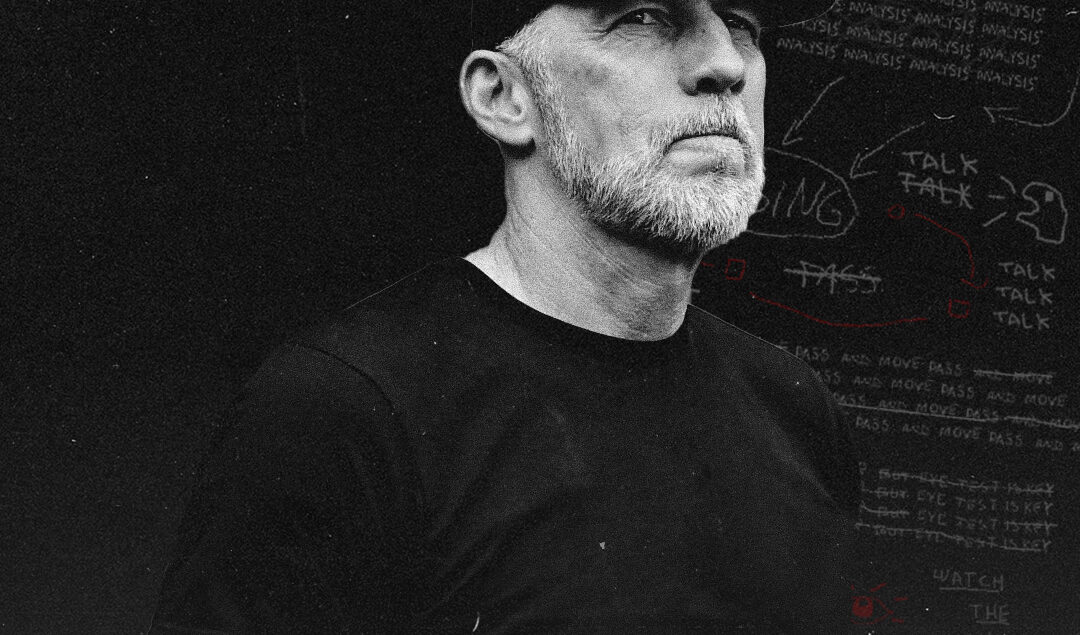Tactical Analysis: Eric Roy’s Brest
When Eric Roy took charge of Stade Brestois 29 on January 3, 2023, the French club were battling relegation. Today, they are on track to qualify for European football for the first time in club history, sitting second in the Ligue 1 table, 10 points behind Paris Saint-Germain, one above Monaco and four above Lille, all of whom have a game in hand on Les Pirates.
Despite losing their best attacking player in Franck Honorat, who joined Gladbach for €8 million, and despite spending a combined total of €3.5 million on transfers in the summer window, Brest have punched above their weight and are poised for their best-ever finish in France’s top-flight. But just what are the keys behind their success? Today, we’re taking a look at the tactics that have made Brest the revelation of the 2023/24 Ligue 1 season, starting with their manager.
When Eric Roy took charge of Stade Brestois 29 on January 3, they were mired in a relegation fight after taking 13 points from their first 17 matches.
Today, Brest sit fourth in Ligue 1, level on 15 points with Paris Saint-Germain.@shaunconnolly85: https://t.co/I50U5vAkSq pic.twitter.com/6PqXbBiKqb
— Breaking The Lines (@BTLvid) October 9, 2023
He played a total of 406 games during his professional career, most notably playing 111 games for Olympique Lyonnais. After retiring from the professional game he joined Nice as head of communications and even became Nice’s sporting director in 2009.
As two years went by he became Nice’s head coach, but was sacked a year on in 2012. After a five-year sabbatical from the beautiful game he had unsuccessful tenures at Lens as well was Watford as their sporting director, before retuning to France and becoming Brest’s coach.
The 56-year-old Frenchman’s decision to return to management after a 12-year hiatus has paid dividends for a Brest side that has made the most out of loanees and free transfers and developed a formidable synergy. They shape up in a 4-3-3 with Martín Satriano and Stevie Mounie rotating positions in attack and keeping the opposing defenders guessing.
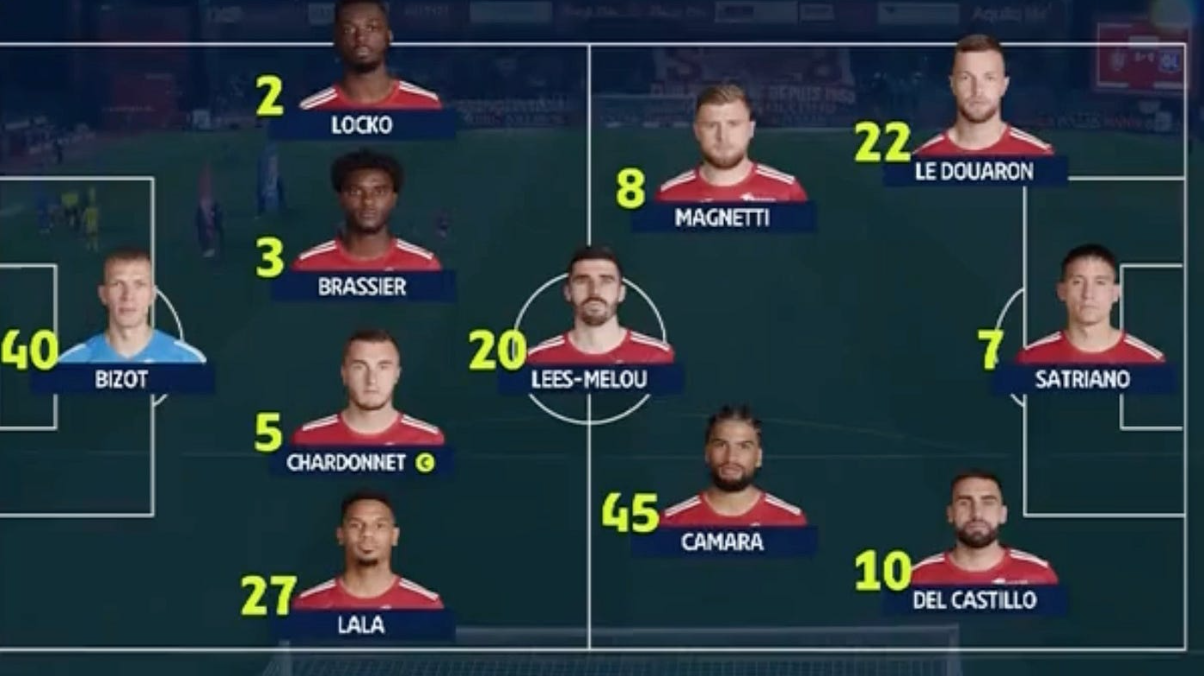
Typical Brest line-up
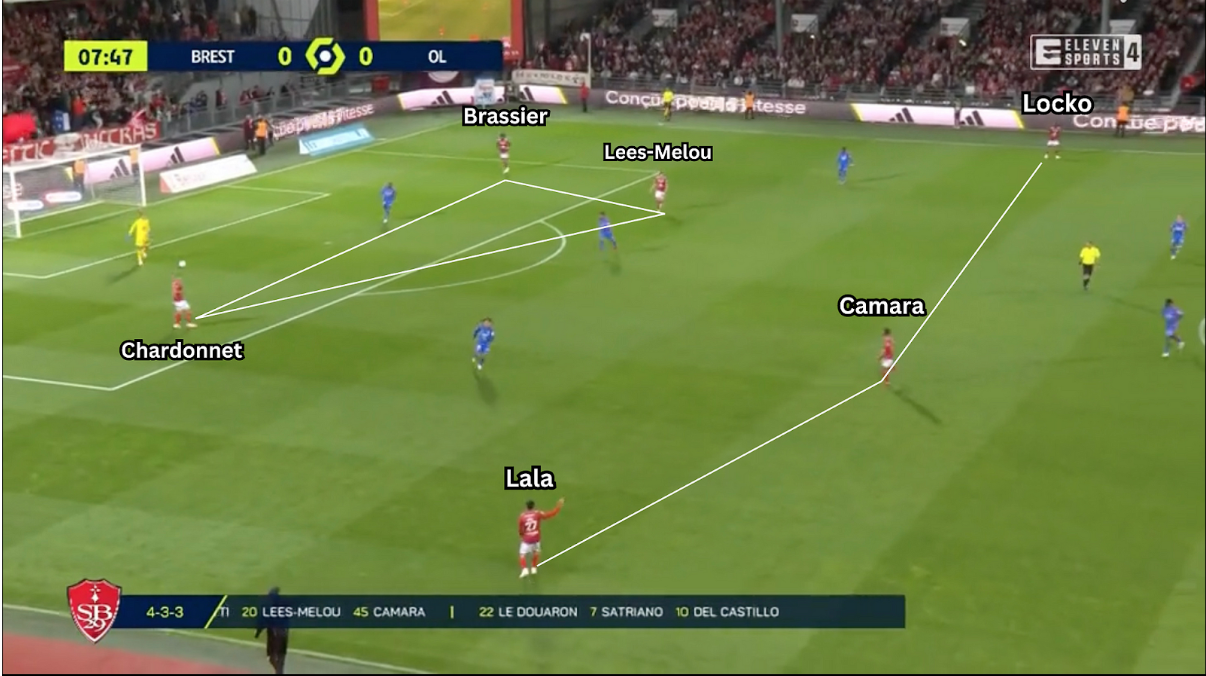
First phase of build-up play
During the first phase of possession, the wing-backs will creep forward whilst Pierre Lees-Melou drops deep to support the build-up play. Here, summer recruit Mahdi Camara drops deep whilst midfield partner Hugo Magnetti takes up his position as #10, a consistent pattern in Brest’s attacking strategy with the wingers also free to interchange positions and threaten from the opposing flank.
Oftentimes, Brest will seek to go direct and attempt to win a second ball and push forward, lumping it forward to their strikers — with Satriano and Mounie winning 2.97 and 7.62 aerial duels per 90. However, they would opt for a different set-up against Marseille, with Roy opting for a back three. Kenny Lala dropped from his typical right back position and operated as a right-sided center back, whilst Bradley Locko played as a left winger.
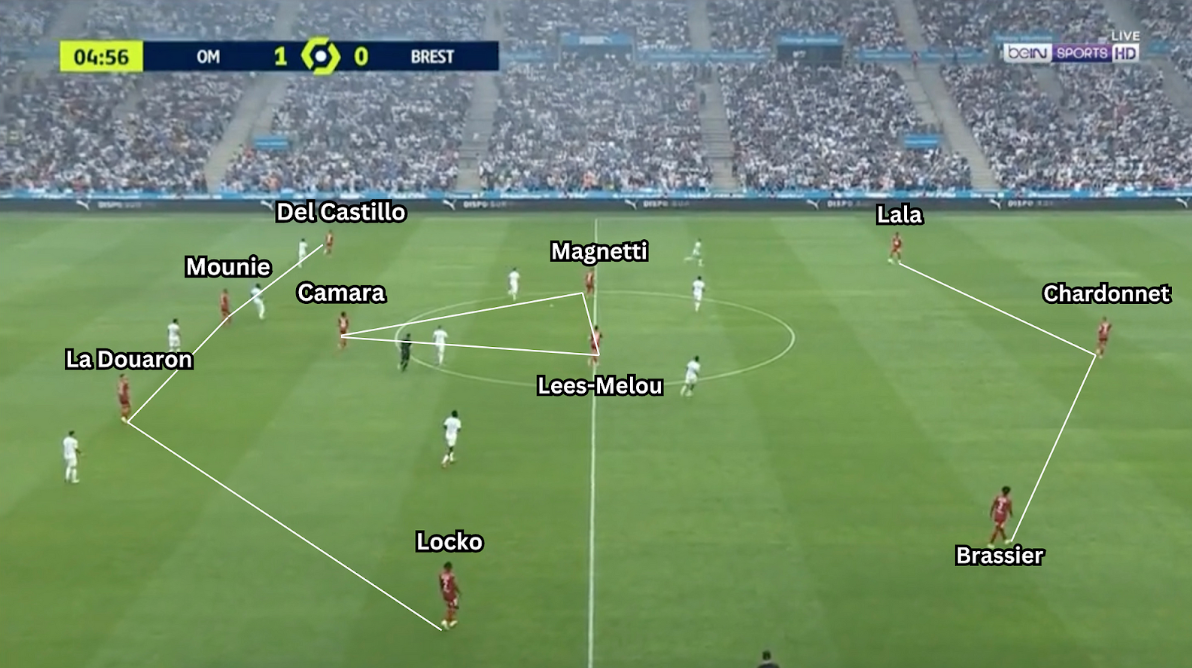
Their midfield triangle allows them to easily rotate possession and pass out to the wings, or move the ball up through Camara or Magnetti. Lala will break loose from the three defenders as Brendan Chardonnet and Lilian Brassier form a two-man defence.
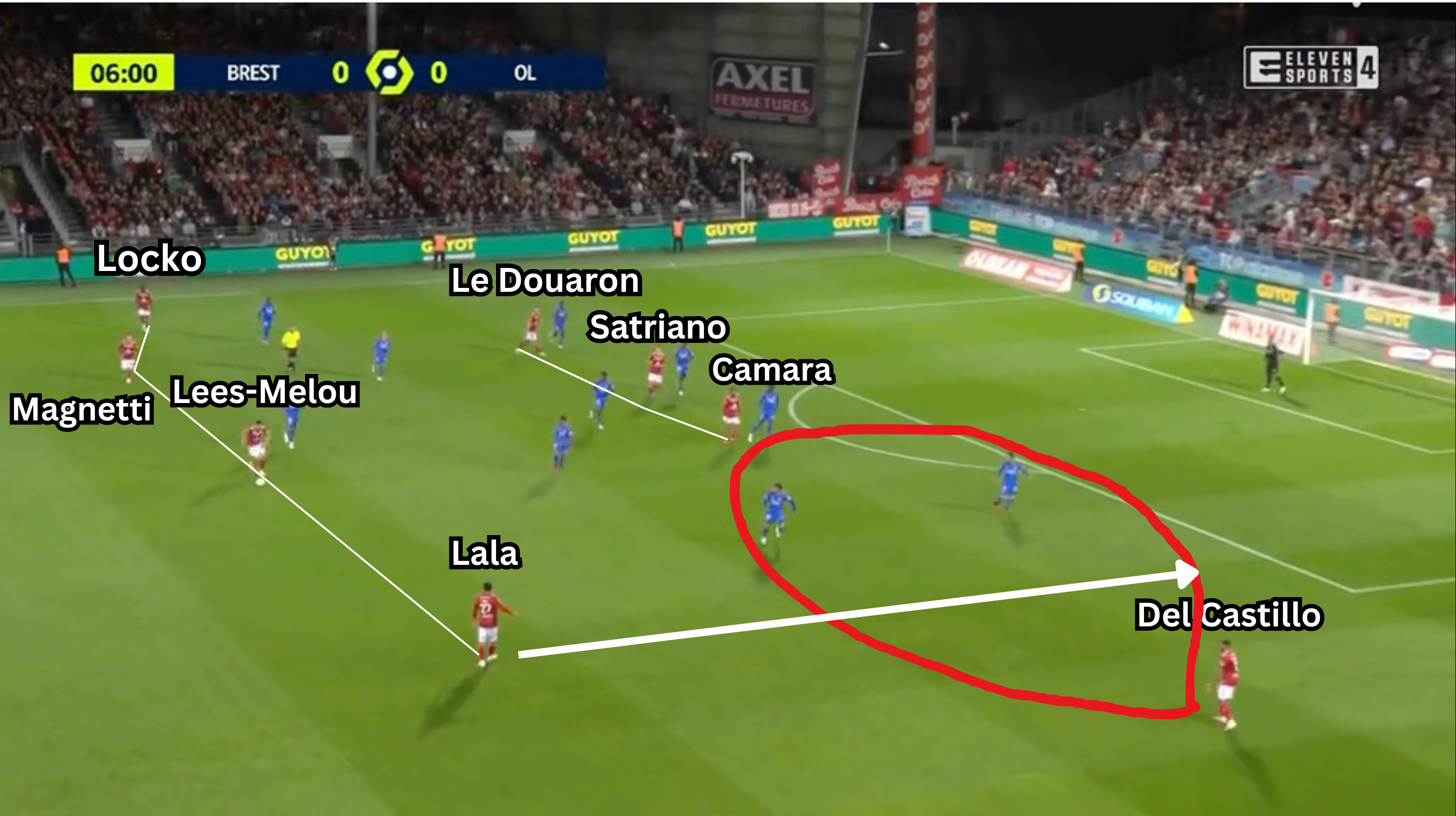
When Brest move up the pitch they move into their 2–4–5 formation. #10 Camara pushes up and becomes a de facto striker while Lala and Locko provide with. Then a focus point is Romain del Castillo’s positioning on the wing, he detaches himself from the other attackers which does a few things.
- It leaves space for the very attacking Kenny Lala to run into and take a shot or pass or play the ball in the opponents box.
- Because Del Castillo is so close to the touchline he has more than enough time to prepare and deliver a cross into the box for the other three forwards.
- Del Castillo can easily dribble into the box or to the edge of the box to pass or take a shot.
Del Castillo delivers a quite big number of crosses, more than half a cross per game (top 13%) out of a total of 2.27 passes into the penalty area per90 (top 9%). On the topic of Del Castillo, the French winger is Brest’s biggest creator. Brest’s final phase attack often goes through Del Castillo, while their three forwards run towards the back post.
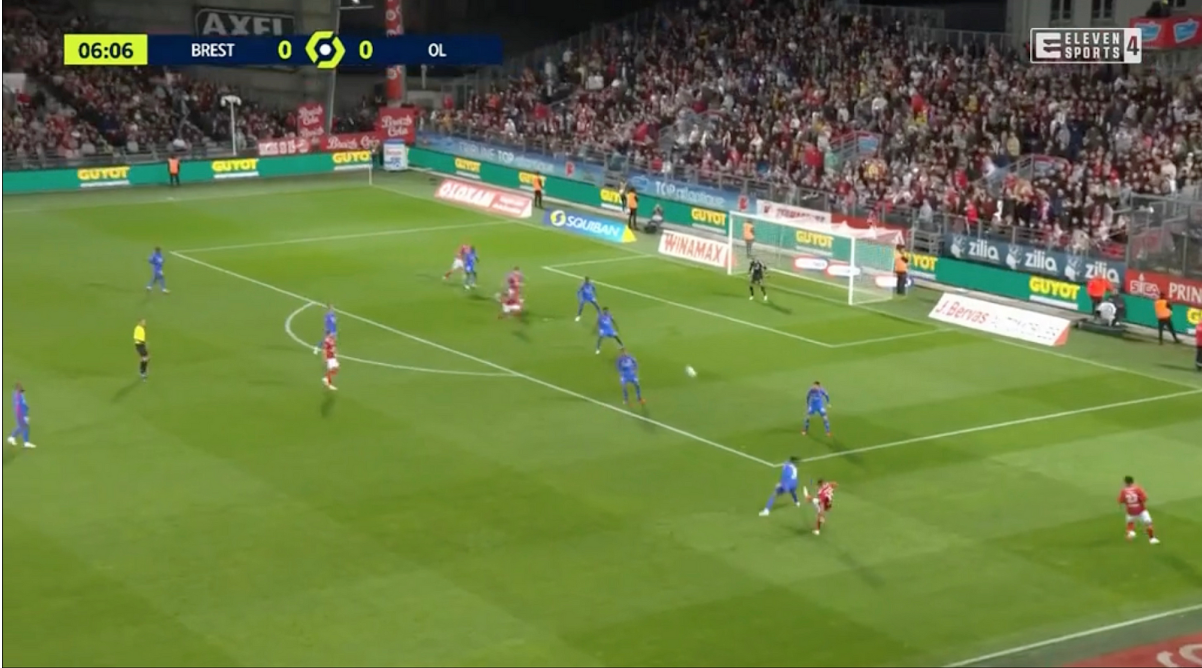
Defensively, Brest don’t necessarily have any extraordinary tricks or tactics. A quite simple 4–2–3–1 in which the closest defensive player to an on the ball opponent presses set opponent. This means their 4–2–3–1 doesn’t necessarily hold shape as many players press freely and quickly.

Brest boast the league’s third-best attack (44 goals scored) and the fourth-best defense (27 goals conceded), and despite falling to a heart-breaking last-second defeat to Lyon on Sunday, they find themselves in second place with five matches left. The Pirates have won five of their last eight matches, and one player who has been a key figure in their historic campaign is Dutch goalkeeper Marco Bizot.
After spending the first decade of his career in the Eredivisie (minus a three-year stint at Belgian side Genk), Bizot left the Netherlands in 2021 and quickly emerged as first choice, relegating academy product Gautier Larsonneur to the bench and prompting him to move to Saint-Ètienne in search of minutes.
At 33 years of age, Bizot is having the best season of his career, showcasing his stellar distribution with impressive goal kicks and passes and giving Brest a new dimension in their attacking transitions. His shot-stopping has bene nothing short of world-class with his Post-Shot Expected Goals minus Goals Allowed ranking him among the best 6% of goalkeepers.
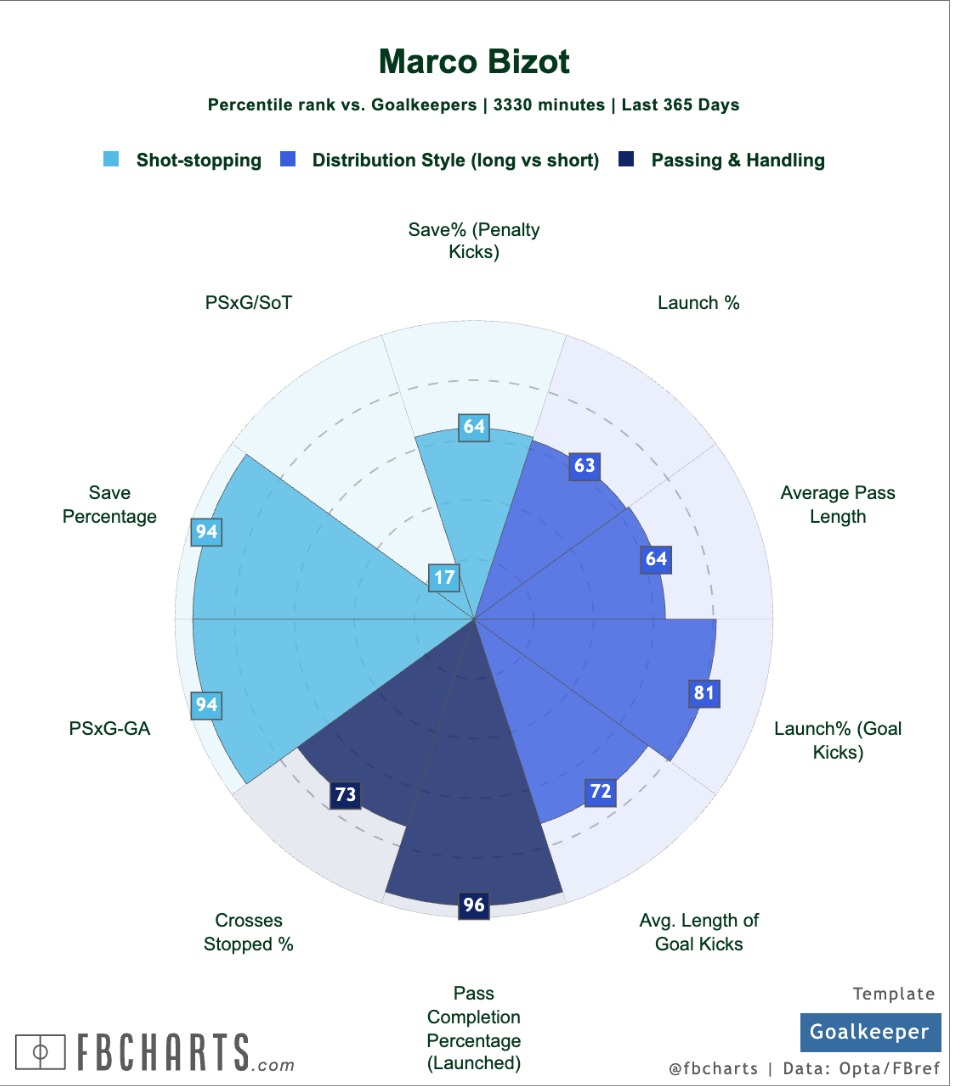
After enjoying a stellar start under new manager Francesco Farioli that saw them enter December undefeated thanks to one of the best defensive records in Europe, Roy’s former club Nice faced off against his current club on February 4, with the two sides sharing the spoils in a 0-0 draw. Since that stalemate, Nice have taken just five points from eight matches, and have dropped to fifth in the table, nine points behind Brest.
As for Brest, they are merely heating up, and they continue to take French football by storm with a well-organized, free-flowing tactical setup. Apart from that draw vs. Nice, Brest have found the back of the net in 19 of their last 20 matches in all competitions, and they’ll be looking to keep up their red-hot form on Sunday in a pivotal match-up at the Stade Francis-Le Blé. They will host third-placed Monaco, who have a game in hand and trail Brest by a point.
Whilst each of the top three in France gain qualification to the league stage of the 2024/25 UEFA Champions League, fourth place will have to settle for a trip to the third qualifying round and fifth guarantees a place in the league stage of the UEFA Europa League. Brest can give themselves some breathing room ahead of fourth-placed Lille with a victory against the principality side and take a major step towards qualifying for Europe’s premier competition for the first time in the club’s 73-year history.
By: Teo Slehofer / @TeoSlehofer
Featured Image: @GabFoligno / Anthony Dibon / Icon Sport
